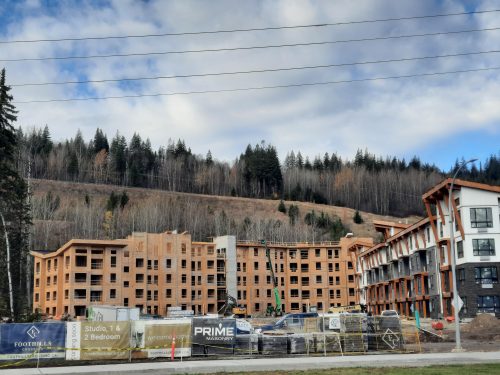Housing shortages is a problem in Prince George just like it is across the country. Today, CFUR News looks at some possible solutions by looking at what another community with similarities to Prince George are considering.
Today's program looks at Medicine Hat, Alberta for some new ideas. It's a Canadian city of a similar size as Prince George. Housing First strategies exist in Prince George, but they haven’t taken off on a large scale yet. Meanwhile Medicine Hat rolled the dice long ago and has been pursuing Housing First informed developments for years now. Achieving “functionally zero” homelessness in 2021, Medicine Hat does still continue to face challenges, but has had successes as well.
One of the keys in their success is collection of local data. Jaime Rogers, Manager of the Homeless and Housing Development Department with Medicine Hat Community Housing Society explains, “We’ve had a Homeless Management Information System in place since the onset of our delivery, where we do have coordination and consistency around data being collected. We also coordinate information with our policing service, our health service, shelters as well as our programs which are actually operating, so we have the availability to have very consistent, consistently collected data, with the individuals’ permission. That data helps us look at what level of service the individual is requiring, and what they’re not requiring as well sometimes. It also allows us to look at those individuals we see continuously housed but are falling back into a state of homelessness. We really do analyze that data information and look at not, ‘how did that individual fail?’ but ‘how did that system fail the individual?’ in terms of ‘maybe we need a different response.”
With the availability of this data, she cites increasing utility rates as a recent factor of stress that is influencing homelessness in the city. Identifying causes and variables within the city has been helpful to the program and its participants.
One might assume that the municipality of Medicine Hat is sponsoring the budget for the Medicine Hat Community Housing Society. Instead, they’ve so far come forward as a partner in the form of strong advocacy, providing land, and installing utilities at no cost. These pieces make last year’s provincial funding (approximately 3 million dollars) and federal funding (approximately 1 million dollars) go a lot further within the program and towards creating homes.
Despite the successes of adopting a Housing First strategy, the Society isn’t without critics. Rogers describes one method to counter the push back, “Something we do, and we do exceptionally well, is we are honest about what we’re doing and where we maybe got it wrong. In terms of, ‘that wasn’t the right approach to use’, or ‘we could have intervened sooner.’ It’s a community issue. Homelessness is a community issue. It's not the homeless sector issue, it’s not the housing sector, it’s not a policing issue, it’s a community issue.”

Housing is in high demand in Prince George BC. This building is going up at the south end of Foothills boulevard at the bottom of University Drive. Photo Credit - Ian Gregg


